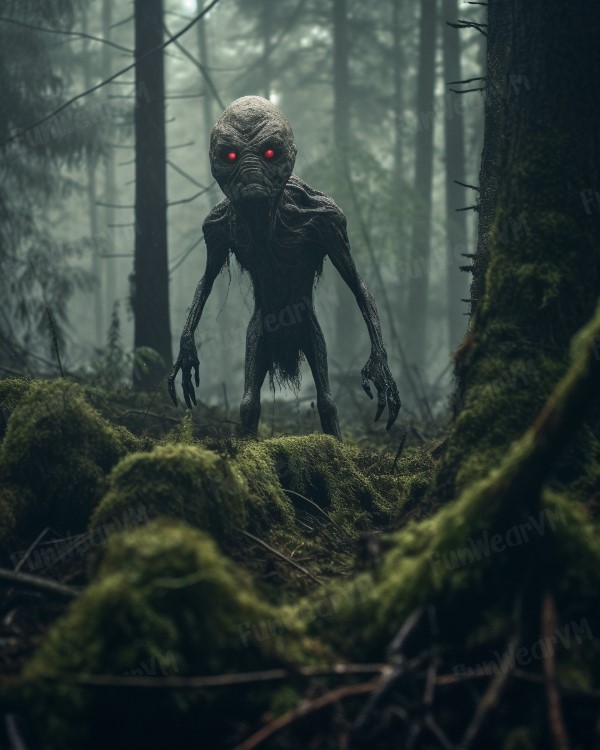
Melon heads are a group of mysterious creatures that have been reported in various parts of the United States, especially in Ohio, Michigan and Connecticut. According to the folklore, they are small humanoids with abnormally large heads who live in secluded areas and sometimes attack people who wander into their territory. But where did they come from? And are they real or just a product of imagination?
History and Origins
The melon head legend has been around for decades, but its exact origins are unclear. Some sources trace it back to Europe, where stories of deformed and isolated people were common in the 19th and early 20th centuries. For example, there was a family of melon heads in Bavaria, Germany, and another one in Risbury, England, both allegedly caused by inbreeding. Some also suggest that the term “melon head” may derive from “Melungeon”, which refers to a mixed-race group of people in Appalachia who were discriminated against and marginalized by society.
However, the most popular versions of the legend are set in the United States, where different states have different variations of the story. The three most prominent ones are:
- Ohio: In this version, the melon heads were originally orphans who were experimented on by a mad doctor named Crow (or Krohe, Kroh or Melonhead) at an asylum near Kirtland. The doctor injected fluid into their brains, causing them to swell and deform. The children eventually rebelled and killed the doctor, burned down the asylum and escaped into the woods. They became feral and cannibalistic, and are said to haunt the area around Wisner Road.
- Michigan: In this version, the melon heads were children with hydrocephalus (a condition that causes fluid buildup in the brain) who lived at an institution called Junction Insane Asylum near Felt Mansion in Ottawa County. They were abused and neglected by the staff, and eventually released into the forest surrounding the asylum. They also became feral and cannibalistic, and are said to lurk around Felt Mansion and other nearby locations.
- Connecticut: In this version, the melon heads were either a family accused of witchcraft and banished into the wilderness, where they survived by inbreeding and mutating; or escaped patients from Fairfield Hills Hospital or Garner Correctional Institution, both located in Newtown. They also became feral and cannibalistic, and are said to roam around various rural roads in southwestern Connecticut.
Possible Explanations
The melon head legend is obviously a folklore phenomenon that has no solid evidence to support its existence. However, there are some possible explanations for how it originated and why it persists.
One explanation is that it reflects the fear and prejudice of urban and suburban people towards rural and isolated people who may have different lifestyles or appearances. This is especially true for the post-World War II era when many people moved from cities to suburbs and encountered unfamiliar cultures and environments. The melon head legend may also serve as a scapegoat or a warning for social deviance or misbehavior.
Another explanation is that it is based on some historical facts or events that have been distorted or exaggerated over time. For example, there may have been cases of hydrocephalus or other medical conditions that caused abnormal head shapes among some people in certain areas. There may have also been cases of abuse or neglect at some institutions or orphanages that housed children with mental or physical disabilities. There may have even been cases of cannibalism or violence among some groups of people who were desperate or disturbed.
A third explanation is that it is influenced by other sources of popular culture or media that feature similar themes or characters. For example, there are many horror movies, books and games that depict deformed or monstrous creatures that live in secluded places and attack unsuspecting victims. Some examples are The Hills Have Eyes (1977), The Texas Chainsaw Massacre (1974), Wrong Turn (2003), Resident Evil (1996) and Silent Hill (1999). These sources may have inspired or reinforced the melon head legend among some audiences.
Stories and Sightings
Despite the lack of evidence or credibility, the melon head legend has attracted many curious and adventurous people who have tried to find or encounter them. Some have claimed to see them or hear them in various locations associated with the legend. Some have even claimed to capture them on camera or video.
However, most of these stories and sightings are either anecdotal, unreliable or hoaxed. Many of them are based on hearsay, rumors or second-hand accounts that cannot be verified or corroborated. Many of them are also influenced by confirmation bias, imagination or suggestion that make people see what they want to see or expect to see. Many of them are also deliberate hoaxes or pranks that aim to fool or scare others for fun or fame.
One example of a hoax is a video posted on YouTube in 2011 by a user named “TheMelonHeadHunter”. The video shows a group of teenagers driving around Felt Mansion in Michigan at night looking for melon heads. They encounter one hiding behind a tree and chase it with their car until it runs away into the woods. The video has over 300 thousand views and many comments from viewers who either believe it or doubt it.
However, the video was later revealed to be a fake by another user named “TheMelonHeadHunterExposed”. The user posted another video showing how he made a melon head mask out of paper mache and wore it while his friends filmed him running around Felt Mansion. He also explained his motives for making the hoax: he wanted to make fun of people who believe in melon heads and show how easy it is to fool them.
References
If you want to learn more about the melon head legend, here are some references you can check out:
